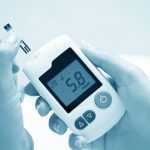The Medical Device Coordination Group (MDCG) has recently published a new guidance document, MDCG 2024-4, which focuses on safety reporting in performance studies of in-vitro diagnostic medical devices (IVDs). This document details the procedures and requirements for reporting serious adverse events (SAEs), device deficiencies, and new findings related to these events during performance studies under Regulation (EU) 2017/746.
Additionally, the template for the Summary Reporting Form (MDCG 2022-9) has been updated to ensure standardized and efficient reporting.
The safety reporting requirements are outlined in Article 76(2) of Regulation (EU) 2017/746 – In Vitro Diagnostic Medical Device Regulation (IVDR).
The sponsor shall report without delay to all Member States in which a performance study is being conducted all of the following:
- Any serious adverse event that has a causal relationship with the device, the comparator or the study procedure or where such causal relationship is reasonably possible;
- Any device deficiency that might have led to a serious adverse event if appropriate action had not been taken, intervention had not occurred, or circumstances had been less fortunate;
- Any new findings in relation to any event referred to in points a) and b).
Reporting must be conducted electronically through EUDAMED as specified in IVDR Article 69. However, since EUDAMED is not yet fully operational, this MDCG guidance provides alternative procedures for safety reporting in performance studies during its absence.
This MDCG guidance document is applicable to performance studies outlined in IVDR Article 58(1), Article 58(2), Article 70(1), and Article 70(2), as well as combined studies involving medicinal products and IVDs. It can also be relevant for PMPF studies utilizing CE-marked devices within their intended purpose. However, this guidance is only applicable if a causal or reasonably possible relationship exists between serious adverse events and the study. Additionally, Chapter 10 of MDCG 2024-4 offers further guidance on evaluating the causality between IVD medical device usage and the occurrence of each serious adverse event.
Reporting Method
From 26 May 2022 the template of the Summary Reporting should be used for safety reporting.
Once EUDAMED becomes mandatory, sponsors are required to utilize the EUDAMED, while the form may only be employed for subsequent follow-up reports or for transmitting final reports to the NCAs (national competent authority) regarding events initially communicated using the form.
Timelines for Reportable Events
Events indicating imminent risk of death, serious injury, or serious illness, necessitating prompt remedial actions or representing new findings, must be reported immediately. The reporting deadline is within 2 calendar days from the sponsor’s awareness of a new reportable event or new information related to a previously reported event.
For any other reportable events under IVDR Article 76(2) or any new findings/updates to it, the reporting deadline is immediately, but not later than 7 calendar days from the date the sponsor becomes aware of the new reportable event or new information related to an already reported event.
The sponsor must implement and maintain a system to ensure that the reporting of the reportable events will be provided by the investigator to the sponsor immediately, but not later than 3 calendar days after awareness of the event.
Among other key aspects, MDCG 2024-4 provides reporting forms, definitions, abbreviations, and in- evaluations of casualty assessments.
MDCG 2022-9 / Rev.1 Summary of safety and performance Template
Regulation (EU) 2017/746 on in vitro diagnostic medical devices (the IVDR) requires that the manufacturer shall draw up a summary of safety and performance (SSP) for class C and D devices, other than devices for performance studies. The SSP shall be validated by a notified body (NB) and made available to the public via the European database on medical devices (Eudamed).
The SSP should include information dedicated to the intended user, and if relevant, the patient. The SSP shall be kept updated in Eudamed.
If the device is not intended for self-testing, its Summary of safety and performance (SSP) should target professional users. However, if the manufacturer deems it necessary, they should include a section for patients written in clear language. The SSP template for such devices is provided in Section 1.
If the device is intended for self-testing, the Summary of safety and performance (SSP) should be easily understood by patients or laypersons, considering factors such as the age of the target audience. The SSP template for devices intended for self-testing is provided in Section 2.
For further information on the IVDR New Guidance regarding Safety Reporting in Performance Studies, consider reaching out to MakroCare, a trusted Regulatory expert. Keep yourself updated and adhere to regulations.


